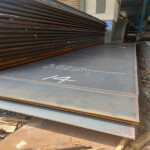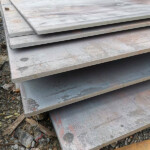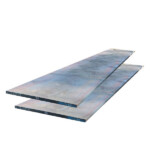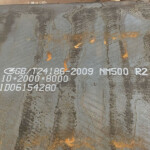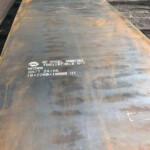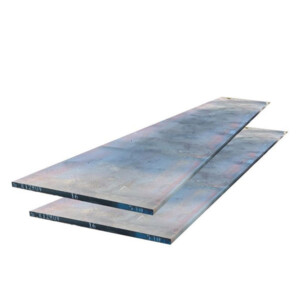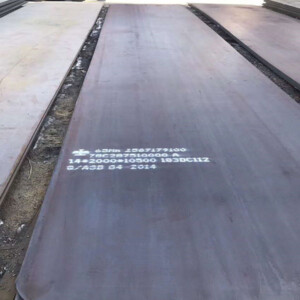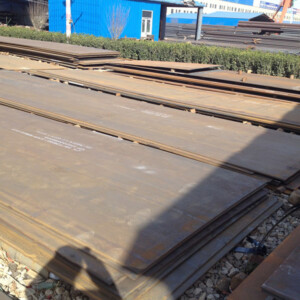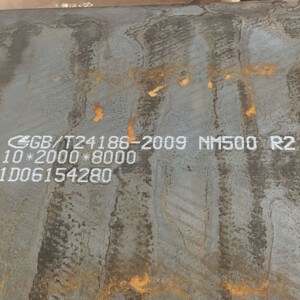Material: The wear-resistant plate is composed of two parts: low carbon steel plate and alloy wear-resistant layer, the alloy wear-resistant layer is generally 1/3~1/2 of the total thickness. When working, the matrix provides comprehensive properties such as strength, toughness and plasticity to resist external forces, and the alloy wear-resisting layer provides wear-resisting properties to meet the requirements of specified working conditions.
Grinding steel plate has high wear resistance and good impact performance, can be cut, bend, welding, etc., can take welding, plug welding, bolt connection and other ways to connect with other structures, in the maintenance site process with time-saving, convenient and other characteristics, widely used in metallurgy, coal, cement, electricity, glass, mining, building materials, brick and other industries, compared with other materials, It has a high cost performance and has been favored by more and more industries and manufacturers
Excellent Wear Resistance
The chemical composition of the wear-resistant layer of the alloy carbon content of 4 ~ 5%, chromium content of 25 ~ 30%, the volume fraction of Cr7C3 carbide in the metallographic structure of more than 50%, the macro hardness of HRC56 ~ 62, the hardness of chromium carbide HV1400 ~ 1800. Because the carbide is vertically distributed in the wear direction, the wear resistance is more than doubled compared with the cast alloy with the same composition and hardness. The wear resistance of several typical materials is compared as follows:
(1) with low carbon steel; 20 ~ 25:1
(2) with high chromium cast iron; 1.5 to 2.5:1
Good Impact Resistance
The substrate of the wear-resistant composite steel plate is low carbon steel or low alloy. Stainless steel and other ductile materials, reflecting the advantages of bimetal, wear-resistant layer to wear the wear of the medium, the substrate bears the load of the medium, so it has good impact resistance. Can withstand impact and wear such as high drop hoppers in material handling systems.
Better Heat Resistance
The wear layer of the alloy is recommended to be used under the condition of ≤600℃. If the alloy is added to the wear layer of vanadium, molybdenum and other alloys, it can withstand the high temperature wear of ≤800℃.
The recommended temperature is as follows:
Ordinary carbon steel substrate is recommended not higher than 380℃ working conditions;
Low-alloy heat-resistant steel plate (15CrMo, 12Cr1MOV, etc.) is recommended for use under conditions not higher than 540℃;
Heat-resistant stainless steel substrate is recommended for use under conditions not higher than 800 ° C.
Good Corrosion Resistance
The alloy layer of wear-resistant composite steel plate contains a high percentage of metal chromium, so it has a certain rust and corrosion resistance. It can be used to prevent coal sticking on occasions such as dropping coal barrel and funnel.
The Variety Specifications are Complete
Wear-resistant steel plate specifications, varieties, has become a commodity series. The thickness of the wear-resistant alloy layer is 3 ~ 20mm. The thickness of the composite steel plate is 6mm, and the thickness is not limited. The standard wear-resistant steel plate can be provided with 1200 or 3800×12000mm, and can also be customized according to the drawing size according to user needs. Wear-resistant steel plate is divided into ordinary type, impact resistance type and high temperature type three, order high temperature wear-resistant and impact resistance composite steel plate to explain.
Convenient Processing Performance
Wear-resistant steel plates can be cut, bent or crimped, welded and punched, and it can be processed into various parts that ordinary steel plates can be processed. The cut wear-resistant steel plate can be welded into various engineering structural parts or components.
Functions and characteristics
Weldable and good wear resistance



